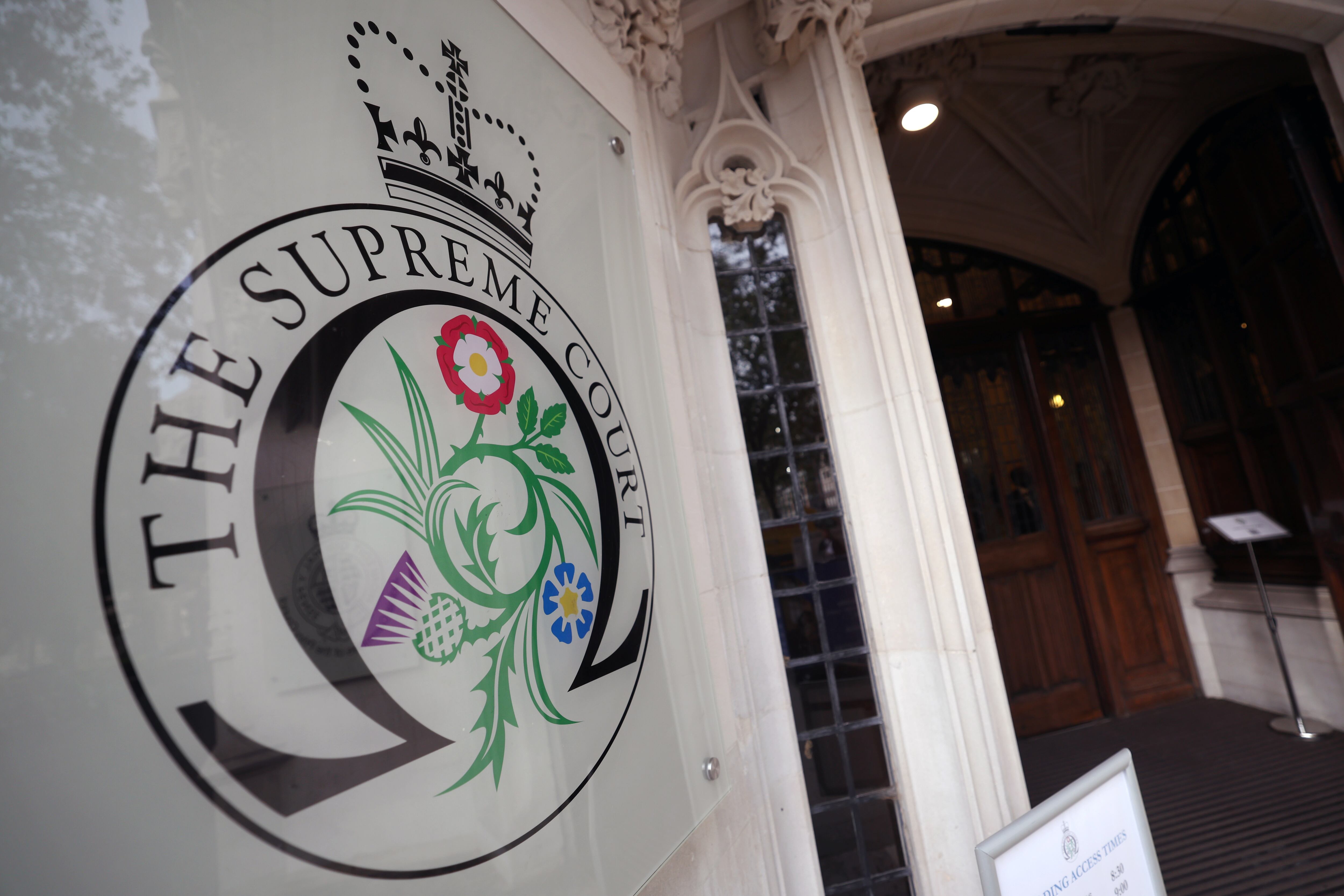“Hasta la vista, baby!” And he was gone.
The first step towards a new, post-Brexit relationship between the European Union and the British government came with the departure of Boris Johnson from Downing Street amid a welter of scandal and recrimination last September.
Johnson’s name had been dirt in Brussels since his time as the Daily Telegraph’s correspondent in the city, when he entertained readers with breathless – and frequently invented – tales of the EU’s assaults on the British way of life.
When he returned to the city as prime minister, he agreed a Brexit treaty and promptly sought to renege on it. Nobody in the EU trusted him as far as they could throw him. The UK was no longer seen as a reliable partner in anything.
READ MORE
In truth, hopes weren’t a great deal higher for his successor, Liz Truss. But senior officials and politicians in Brussels and Dublin were soon surprised by Truss’s apparent seriousness about resetting the relationship. They liked what they heard from her, even if they withheld judgment on the basis of “acta non verba” – it would be on the basis of her deeds, not her words, that they would engage.
In the event, they never got to find out if Truss could be trusted; she was gone after a turbulent seven weeks in Downing Street, her fall watched by half-amused, half-horrified Brussels, now seriously wondering about the stability of the UK.
But from the word go, they liked the cut of Rishi Sunak’s jib. Pragmatic, technocratic, economy-focused: Brussels hoped he was a man they could do business with. In Dublin, where politicians and senior officials have often played a role in explaining and interpreting the British pogo-ing on Brexit to EU colleagues, the assessment was the same: Sunak wants to do a deal and put the endless wrangling behind him.
Trust was built quickly from the very top. When European Commission president Ursula von der Leyen met Sunak at the Cop27 climate action conference in Sharm El-Sheikh, Egypt, in November, they seemed to click immediately. When she took to the podium alongside Sunak to announce the deal last week, her first words were to talk of her personal relationship with the prime minister, and how supporting Ukraine had brought them together.
‘Saw eye to eye’
“I remember our first discussions when we saw eye to eye on how to support our Ukrainian friends. And I was encouraged by our trustful and strong co-operation on this crucial geostrategic issue,” she recalled.
“But I also remember how the two of us were honest with each other about the difficulties in our bilateral relationship. And it was vital to put that on the right footing, too. We committed to work hard together to do so.”
But the seeds for an agreement were already there, sowed years back, waiting for spring to come.
Maros Sefcovic, the commission vice-president entrusted by the EU member states with carrying out a negotiating mandate on their behalf, laid out ideas for an “‘Express Lane’ for the movement of goods from Great Britain to Northern Ireland” back in October 2021. He emphasised that the more the EU trusted UK authorities to comply in good faith with the arrangements, the more flexible they could be.
Almost a year had passed in September 2022 when he said in a speech to the British-Irish Association’s conference that these proposals had “never been seriously picked up” by the UK side. But with Sunak in Number 10, they would be.
An agreement by both sides not to brief the press about their content, and not to speak about it publicly, allowed them to kick around ideas for solutions without committing to them
It helped that Northern Ireland secretary Chris Heaton-Harris, who served in the European Parliament for a decade, had an understanding of EU institutions and does not share the caricature of Brussels held by some Conservative Party hardliners who have hardly left Westminster.
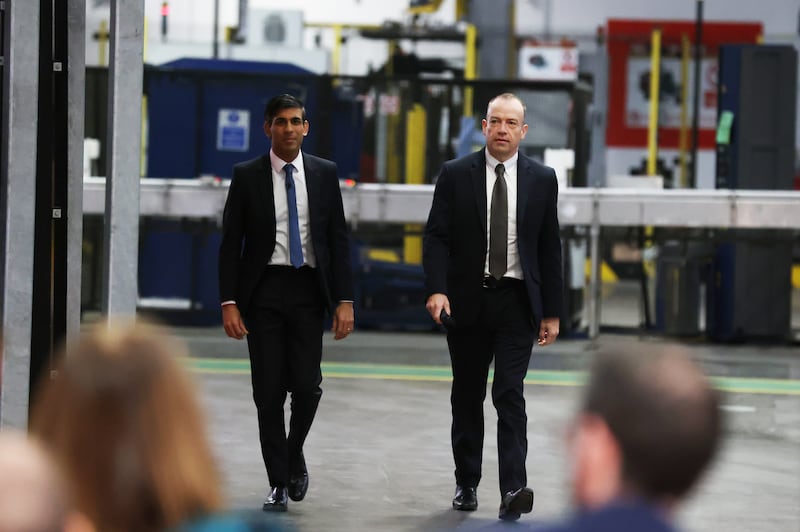
“He knows Brussels,” one diplomat said. He doesn’t have the “twisted idea that the EU is some kind of colonising empire”.
Sefcovic and British foreign minister James Cleverly are also said to get on well, sharing a lively sense of humour and a love of the classic British political comedy, Yes Minister.
Fixing relations
More substantially, the UK government now believed there was an imperative to fix relations with the EU generally; the Northern Ireland protocol was a substantial part of that, but not the only part. On the EU side, the suspicion – rife when Johnson was prime minister – that the British wanted an open-ended fight with the EU for domestic political reasons was beginning to fade in the face of earnest engagement from Cleverly and his officials.
Sunak quietly paused the progress of the Northern Ireland Protocol Bill at Westminster, which would have given the British government the legal right under domestic law to abandon the protocol, and which enraged the EU. “It was a loaded gun on the table,” one senior EU diplomat told the Financial Times. “We couldn’t talk in those circumstances.”
[ How the new deal on the Northern Ireland protocol will workOpens in new window ]
[ Dublin wonders if the DUP can say yes to anythingOpens in new window ]
Work began in earnest in the weeks before Christmas, as an EU team of top envoys, customs officials and regulatory experts met their UK counterparts in an unassuming European Commission office building on a side street in Brussels’ European quarter.
The talks were described as “scoping” exercises. An agreement by both sides not to brief the press about their content, and not to speak about it publicly, allowed them to kick around ideas for solutions without committing to them – and without risking a backlash from London, Belfast or the EU member states.
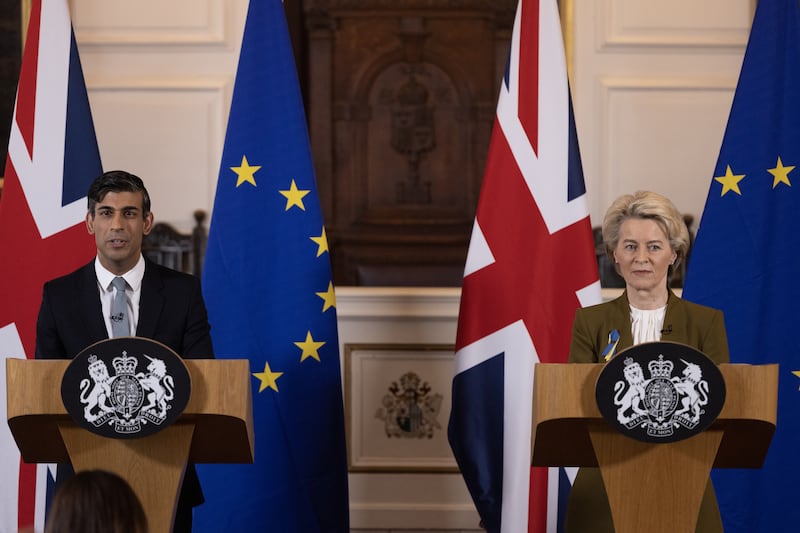
“You guys were told that they hadn’t gone into the ‘tunnel’,” one official said this week. “Well, they were in it.” (”The tunnel” is an EU expression for intense negotiations where all parties agree not to leak any details.)
Industry sources, like supermarket chains, were quietly sounded out on the feasibility of solutions such as putting labels on products reading “Not for EU”.
But envoys of member states were given no blow-by-blow updates. The political sensitivity required an absence of leaks: they entrusted Sefcovic to stick to what they would accept.
“We were as in the dark as in the dark gets,” one diplomat said. “We had no info except that things were progressing.”
Goodwill gesture
In a move cast as a goodwill gesture, the EU announced just before Christmas that it would extend arrangements to allow veterinary medicines to continue to flow into the North. In parallel, the UK government announced it would go ahead with the building of customs posts in Belfast and Larne.
“It showed that they were serious,” an EU official said.
By January, diplomats began to expect a deal was a matter of “when not if”. Von der Leyen and Sunak became involved directly, speaking by phone. Their strong rapport was talked of in the commission’s Berlaymont headquarters.
On a chilly day in London on January 9th came a breakthrough. The two sides announced an agreement to share real-time data on goods travelling from Britain into Northern Ireland – something the EU had been waiting for since the protocol came into force.
For the EU, this was crucial to win over those sceptical about the idea of looser checks – in particular, the hardest-to-please member state, France. Paris had been enraged by British noncompliance with the prior deal and has long pushed for tougher enforcement to protect its agriculture industry from the risk of diseases entering the Single Market through the Northern Irish back door. The commission could now reassure France it had oversight of what was coming in.
In turn, Sunak hoped to get French co-operation to deal with the “small boats” issue – the traffic in migrants crossing the English Channel, a huge issue in the UK.
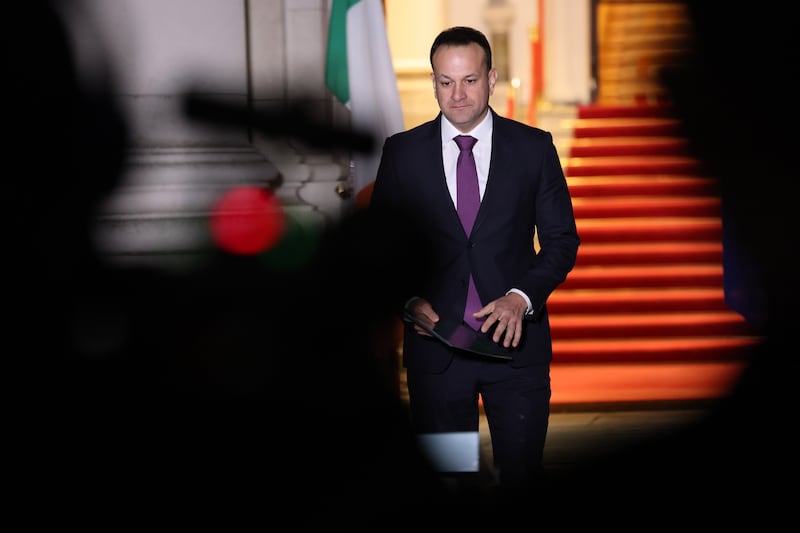
Soon, reports of further breakthroughs began to appear in the British press. Some stray details – about curbs to the role of the European Court of Justice and compromises on state Aid – went further than the EU could go, and risked spooking member states and setting a bar too high for an agreement. In Dublin and Brussels, the reports were hotly denied. But nobody said that the deal was off. Not yet, but soon, was the message.
Other interventions were similarly unwelcome. When Taoiseach Leo Varadkar, whose relationships with unionists were difficult throughout the long Brexit negotiation period in 2017-19, said that perhaps the protocol had been “too strict”, it was viewed in Brussels as deeply unwelcome.
High anxiety
But by early February it was already clear that a deal could arrive any time. One key official took a pre-arranged holiday in a state of high anxiety about being forced to cancel at the last minute; the Irish Embassy in Brussels was on alert.
“We are getting there,” Sefcovic told journalists on February 6th. And they were. But slowly.
On the afternoon of February 16th, it suddenly seemed the game was on. Sunak flew to Belfast to meet political leaders, where there was a lengthy, and at times difficult, late-night session with the DUP. EU ambassadors were summoned to a Friday meeting with Sefcovic to be briefed on talks with the UK.
In that meeting, Sefcovic told the diplomats to be ready at short notice to parse a deal. Irish officials expected von der Leyen would be travelling to London for the grand unveiling as soon as that Monday.
But over the weekend, momentum cooled. When Tánaiste Micheál Martin, in Brussels for a meeting of foreign affairs ministers, met Sefcovic in the Berlaymont on Sunday night, he is said to have found the Slovakian disconsolate. The mood was “very down”, a person with knowledge of the matter said.
There were reports that some EU countries were unhappy. ‘All makey-uppy,’ said one source. ‘To make it seem to the Brits like they got a better deal than they did’
In London, there was a full-scale pushback from hardline Eurosceptics in Sunak’s Conservative Party who had woken up to the impending agreement and were fearful that Sunak was going to sell out.
As the week went on, journalists in Brussels met a brick wall as EU officials and diplomats closed ranks against leaks, determined to give the British prime minister the time he needed to sound out the political factions and set the stage for the landing of a deal.
Meanwhile, there were reports that some EU countries were unhappy. “All makey-uppy,” said one source. “To make it seem to the Brits like they got a better deal than they did.” Dublin was active in persuading the EU to let the British – and by extension the DUP – claim victory.
Intense consultation
Intense consultation continued on the final details – including on what the deal would be called. “Agreement” couldn’t be used, as this implies something EU member countries have approved – and they were still in the dark, with formal ratification still a long way down the road.
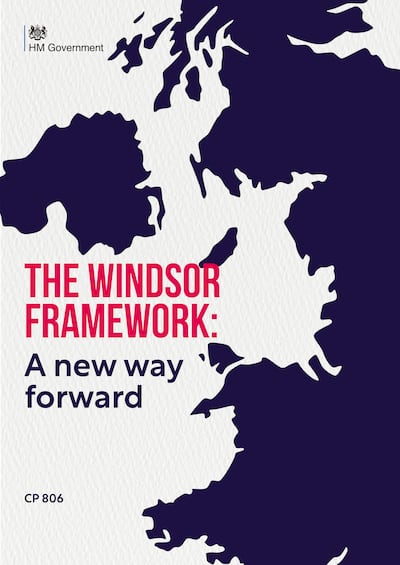
“Settlement” was attractive, but unfortunately this had been used for David Cameron’s ill-fated ‘New Settlement’ with the EU, just before the Brexit referendum.
The London government came up with the idea of naming it after a place. “We left it in their hands as long as we could pronounce it,” one EU official said.
The tie-in with meeting King Charles and the “Windsor” branding was the work of clever heads in Downing Street.
“It’s genius,” one diplomat said. “It showed someone was thinking... it is harder for the DUP to oppose something called ‘Windsor’.” That, of course, remains to be seen.
Last Sunday evening the British government and European Commission jointly announced that von der Leyen would travel to London to meet Sunak the next day. This was the signal to all observers that the deal was on.
In truth, the majority of the 27 have long moved on from the Brexit saga. The war in Ukraine, the energy and cost-of-living crisis have long since taken priority
On Monday morning, a physical copy of the deal and its constituent parts were laid out in a “reading room” in commission headquarters. No digital copy was circulated, to prevent leaks.
Commissioners and their teams could visit in person to read it: a joint political declaration, along with a fat annex of EU position papers and draft regulatory updates. For a few hours these were the most sought-after documents in Brussels, as diplomats and journalists scrambled to get the details of what was coming.
Repaired relations
It was only when von der Leyen and Sunak were minutes from taking to the stage in Windsor that the 27 EU diplomats finally gathered to receive a breakdown from Sefcovic about what the deal contained.
In truth, the majority of the 27 have long moved on from the Brexit saga. The war in Ukraine, the energy and cost-of-living crisis have long since taken priority, and they simply want relations with the UK to be repaired.
For the member states most closely bordering Britain, however, the settlement continues to matter. France remains hawkish, while the Netherlands is keen to ensure that checks and controls are adequate and that its businesses do not face unfair competition from such a close neighbour.
Spain, too, has unresolved post-Brexit disagreements with the UK, such as over the border arrangements for Gibraltar, and may be cautious of over-lenience as it prepares to assume the EU presidency in July.
In Northern Ireland, the fate of the powersharing institutions hangs on whether the DUP buys in. But Sunak has made clear that he will push ahead with or without the DUP.
The train is leaving the station. The post-Brexit era may finally be beginning.




